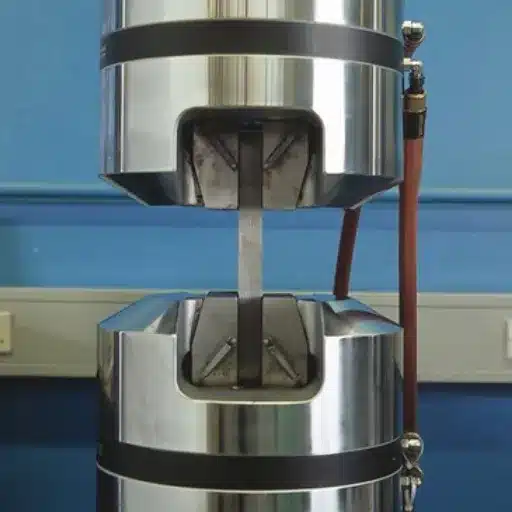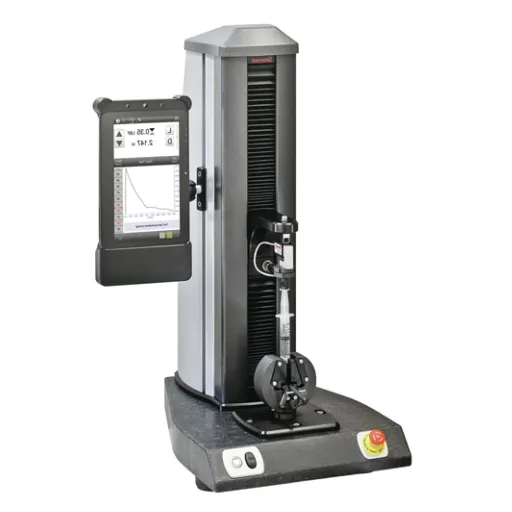The various sectors that utilize rubber materials include health care, automotive, spare parts, consumer goods, and many more. These industries rely on rubber for its ease of processing and unique physical characteristics like elasticity, tenacity, and wide temperature resistance. Rubber also helps in manufacturing various products. Pertaining to sectors such as healthcare and aviation, proper assessment and examination related to portions made from rubber ensures safety and reliability during their applications. This article discusses the primary methods and standards accepted worldwide for testing the quality of rubber. It outlines ideal processes and techniques for rubber testing and explains why the tests are important for manufacturers and end-users. This article will help specialists in quality control and other readers interested in material testing to understand rubber evaluation better.
What is the Importance of Rubber Quality?
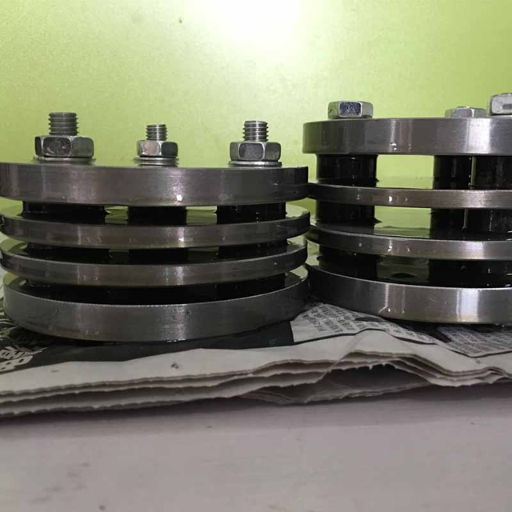
Rubber is significant as it determines the functionality, life cycle, and safety of various products. It is fundamental in automotive, construction, and healthcare industries that diaphragms, seals and rubbers have high-grade resistance to wearing, cracking and environmental strain. Using poor grade rubber can bring safety failures, and increase expenditure due to constant product repairs or replacements. Strict standards of testing helps manufacturers achieve consistency and reliability, and pass regulations which in turn makes legislation compliant products without failing the trust of consumers.
Understanding the Role of Rubber in Various Applications
Because of its elasticity and resistance to high temperatures, rubber is critical in many sectors and industries. In constructions, rubber is used in expansion joints and vibration dampening devices boosting structural integrity as well as service life. An example of such is in automobiles where rubber gaskets are sealed on critical openings on engines which requires immense pressure and wear.
In healthcare, the items and materials that are made out of rubber like latex are critical in manufacturing health biocompatible medical equipment, sterilizable gloves, and tubing. New synthetic rubber technologies with better resistance to extreme heat and renewables like electric systems make rubber a good candidate for innovative technologies, so it’s usefulness in aerospace engineering and medicine expands even further. Grasping these properties and their real-world impacts ensures that industries can continue using rubber’s versatility to fuel innovation and meet changing requirements.
How Does Rubber Quality Affect Performance and Durability?
In modern technology, rubber is a critical component in many devices such as gaskets, seals, and tires. All these products exhibit low weight and ease of manufacturing. Moreover, all these products are aimed for high operating conditions. For instance, high-grade rubber is resistant to UV lights, ozone foams and extreme environment conditions. It is important to note that low-quality rubber tires cannot perform under high temperature of 60-70 degrees due to environmental factors .
Moreover, within the automotive, aerospace, and manufacturing sectors, which routinely deal with oils, solvents, and other corrosive chemicals, the puirty rubber compound is lined with vulcanization precision accuracy and filler quality as alongside wear minimization and lifecycle extension. As an outcome, synergistic formulation optimization and variable control during production can ultimately increase sectional rubber material cost efficiency and performance consistency across various rubber material tier levels.
Common Issues Caused by Poor Quality Rubber
Substandard rubber’s frequent inability to meet required performance capabilities leads to numerous functional and safety problems. One of the more significant issues is an increased occurrence of premature wear which weakens the structural integrity of gaskets, seals, and tires. Low quality rubber plastics suffer from low elasticity and tensile strength which lead to cracking and rupturing under stress. Furthermore, rubber elastomers are more vulnerable to substandard environmental rubber materials such as UV light, chemicals, and extreme temperatures, all of which shorten their useful life. From an industrial point of view, the use of inferior rubber can cause the equipment failure, higher maintenance expenses, and unanticipated downtime. The data reveals that maintaining consistency in formulation ratios of rubber mixtures aids in eliminating such defects and sustaining optimal performance of the product throughout its lifetime.
What Are the Common Methods to Test the Quality of Rubber?

- Tensile Strength Testing
This test measures the rubber’s ability to resist tension until it snaps. Greater tensile strength suggests greater resilience and durability to wear and tear.
- Hardness Testing
The Shore durometer test is used to evaluate rubber’s resistance to indentation making it a bore test which measures stiffness. It accurately captures a material’s stiffness.
- Compression Set Testing
Evaluating the efficiency by which rubber recovers its shape after undergoing some compressive force determines the recovery efficiency. For long lasting elasticity, low set compression values are essential, thus are desirable.
- Abrasion Resistance Testing
Determining efficiency of wear and tear of friction resistance directly affects the effectiveness in tires and industrial belts.
- Aging Resistance Testing
For long-term durability and resistance to degradation, tested materials are placed under extreme conditions such as heating, ozone exposure, and ultraviolet radiation.
These tests alongside others offer thorough analysis for aging and physical, mechanical, and dynamic properties of rubber, thus validating its industrial or commercial suitability.
Overview of Rubber Testing Techniques
To identify modern methods of rubber testing, one has to note that performance characteristics are tested using a collection of methods and the most accurate analytical methods are used to ensure precision and accuracy. One of the techniques used is the Dynamic Mechanical Analysis (DMA), which measures DMA viscoelastic behavior over a range of temperatures and frequencies with respect to time, hence giving critical information concerning a rubber material’s behavior under different conditions. Another method used is Thermogravimetric analysis (TGA). This technique assesses thermal stability and composition by analyzing weight loss with temperature which is important in determining the filler content as well as resistance to heat.
Furthermore, TGA was complemented with Fourier Transform Infrared Spectroscopy (FTIR) which is used to identify chemical bonds and impurities which can drastically change the effectiveness and durability of the material. For looking at microstructures Scanning Electron Microscopy (SEM) aids in observing the surface structures of the materials and failure modes which is important in material wear and degradation.
How to Conduct Hardness Testing on Rubber?
To evaluate the deformation distortion on rubber materials, they need to be stressed with force or pressure and this determines the hardness, therefore semi-quantifying rubber toughness. The industry standard methods are The Shore Durometer Test and The IRHD Test is adopted globally as the International Rubber Hardness Degrees Test.
For softer rubbers, a Shore A durometer is used whereas harder rubbers and plastics are measured with a Shore D durometer. Shore A and D durometers are both types of Shore durometers that perform the same measurement, with the difference being the type of hardness range of the rubber sample in hand. The indenter on the durometer is pressed against a rubber sample with a specific amount of force. The hardness value is obtained as a number between zero and 100 which is read directly from the scale on the durometer.
In the IRHD test, a small amount of force is used with a spherical indenter on the rubber surface. The indentation depth is a measure of the hardness of a material in IRHD units. To some degree, this test is better than the Shore method for measuring thin or oddly shaped samples since it is less influenced by thickness in specimen changes compared to Shore method.
How is Rubber Hardness Measured?
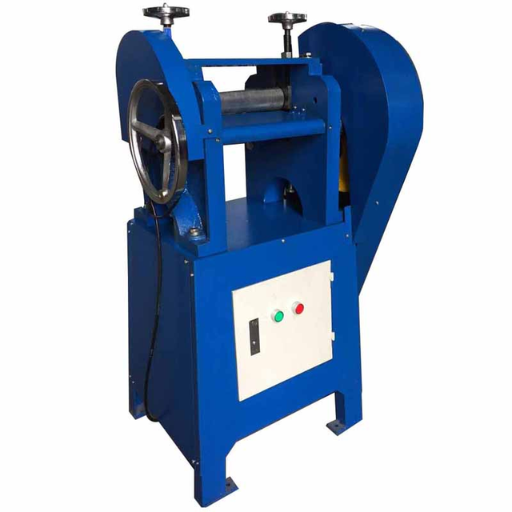
Like any material, rubber’s hardness can be measured using the Shore hardness test and the IRHD (International Rubber Hardness Degrees) test. Both have their specific methods and applications. The Shore test evaluates hardness by measuring the depth of penetration of a spring-loaded indenter into the material. Softer rubbers are measured using the Shore A scale, while harder rubbers are measured with the Shore D scale.
For thin or sample pieces that lack uniformity in shape, the IRHD test is more suitable. It applies a spherical indenter on the material with them exerting a small force to measure indentation depth. Because this approach reduces the effect of sample thickness, it is ideal for tools of small dimensions and irregular shapes. With both methods, repeatable and reliable values are achievable, characterizing rubbers precisely.
What is Shore Hardness and Its Scales?
Shore hardness is now a benchmark for elastomers, polymers and rubbers. The measurement of reverberation through diametral indentation is the basis of the hardness of elastomers, polymers, and rubbers. This one is graded with a durometer which separates it into divisions, more often than not Shore A or D depending on how rigid the substance is. Shore A is more suited for softer materials like natural rubber and thermoplastic elastomers while Shore D serves fully with harder substances like dense polymers and plastic.
Both scales work between 0 to 100 with lower numbers softer and lower scores indicating increased hardness. A natural rubber used in tires would have Shore A values of 60-70. Polycarbonate, a harder material, would sit above 80 on the Shore D scale. These values allow precise data collection for their intended applications and add versatility while ensuring robust performance under various operational conditions.
Different Hardness Testing Methods Explained
|
Testing Method |
Description |
Key Parameters |
|---|---|---|
|
Shore Hardness Test |
Measures resistance to indentation |
Scale (e.g., Shore A/D), Indenter Type |
|
IRHD (International Rubber Hardness Degree) |
Calculates deformation under load |
Preload, Total Load, Ball Diameter |
|
Micro Shore Hardness Test |
Evaluates very small sample hardness |
Sample Size, Indenter Pressure |
|
Durometer Test |
Measures surface hardness of elastomers |
Durometer Scale, Pressure Applied, Sample Thickness |
|
Pusey and Jones Hardness Test |
Assesses compression of rubber pads |
Load Force, Compression Time |
|
Ball Rebound Test |
Measures the rebound resilience |
Drop Height, Ball Mass, Surface Angle |
|
Compression Hardness Test |
Determines material behavior under compression |
Load Applied, Compression Rate, Thickness |
|
Nanoindentation Test |
Analyzes mechanical properties at micro-scale |
Indenter Type, Load Depth, Elastic Modulus |
|
Dynamic Mechanical Analysis (DMA) |
Studies material’s viscoelastic properties |
Frequency, Temperature, Strain, Stress |
Interpreting Hardness Test Results
In any given test, specific considerations about the methodologies chosen need to be taken into account as they have a considerable impact on the results, especially for hardness testing. More advanced engineering or biomedical applications often rely on micro-scale precision, where measures such as elastic modulus and hardness of a material are vital. These can be obtained through nanoindentation tests. Dynamic Mechanical Analysis (DMA) offers intricate details about the viscoelastic behavior of a material, like its capacity to endure mechanical strain at different temperatures and frequencies.
For any analysis to be precise, the relationship between the environmental factors and the tests conducted must be well understood. Measurement of Temperature, load rate, and strain amplitude can greatly influence the mechanical characteristics of materials especially elastomers or polymers. If engineers and material scientists pay close attention to these influence factors, the integrity of the data will be guaranteed. This will enhance confidence towards the material selection and the optimization of the product as well as predicting its actual performance in practical applications.
What Physical Properties Are Important for Rubber Quality?
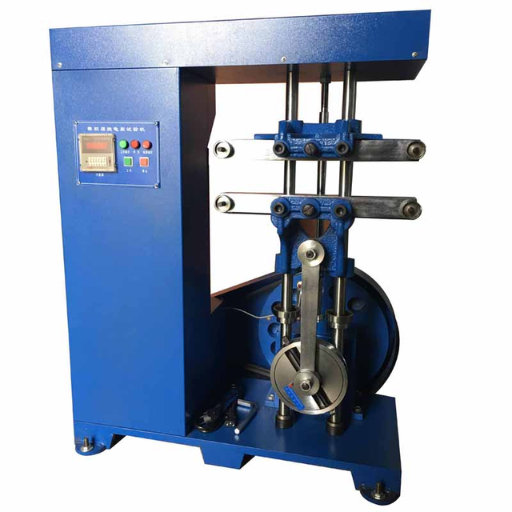
1. Tensile Strength: This indicates the maximum stress rubber can sustain before breaking. For durability and resistance to tearing under load, high tensile strength is critical.
2. Elasticity: Returning to its original form is vital for flexible applications. The steam/shock rubber cork model illustrates this property well.
3. Hardness: This is measured using the Shore hardness scale. The rubber’s indentation resistance is correlated to wear and surface durability.
4. Abrasion Resistance: This property demonstrates rubbers ability to resist wear from friction or repeated use. This is essential in high contact zones.
5. Compression Set: The inability of rubber to regain its original thickness after compressive stress can help determine seal reliability and its performance over time.
6. Tear Resistance: The ability of rubber to resist the propagation of the tears is highly relevant to demand and safety in longevity.
Evaluating these aspects enables the correct choice of rubber materials for functionality and purpose.
Understanding Tensile Strength and Elongation
Tensile strength of a material, for example, rubber, is described as the maximum tensile stress it can withstand before failure. This parameter is measured in pressure units which are usually used in mega Pascals (MPa) and acts as a primary measurement of the material’s mechanical strength. Greater the tensile strength, lower the chances of material breaking under tension. This is particularly important for materials that span undergo stretching forces.
Elongation, by contrast, refers to the stretching of a material until the breaking point is reached. Expressed in percentage, it explains the ease a rubber possesses to bend and fracture. Take an example, 500% elongation implies the material can stretch to five lengths than its nominal length before breaking.
Both properties are dependent on each other and are essential in defining the appropriate uses of rubber materials. Consider, for example, rubbers with high tensile strength and moderate elongation. Such rubbers are best suited for load-bearing applications. Conversely, rubbers that have high elongation and moderate tensile strength may be better suited to flexible dynamic sealing functions. Specialized analyses such as strain rate measurements or stress to strain evaluations are conducted to study rubber behavior under tensile forces. These analyses help industries make better choices regarding materials and improve them for greater efficiency.
How to Evaluate Compression and Abrasion Resistance?
The study of the abrasive mechanical properties and the shear strength of rubber materials involves applying industry-standard processes in conjunction with thorough evaluative techniques to guarantee optimal performance in defined use conditions. For the estimation of compression resistance, the most common test is the ASTM D395 compression set test, which assesses the material’s capability of recovering to its original thickness after sustained compressive load for a predetermined time. Outcome variables such as temperature, loading time, material makeup, and more are crucial determinants, whereby low compression set values signify better resistance.
The DIN Abrasion Test (ISO 4649) assesses abrasion resistance through the rotative abrasion method, which utilizes controlled abrasion processes. Using this technique, the sample is worn down, and wear performance is calculated as volume loss in wear over time. Resistance is often enhanced with certain rubber compounds that incorporate performance fillers like carbon black or silica. Advanced techniques such as scanning electron microscopy (SEM), or scanning electron microscopy, can also be applied to analyze abrasion and surface detail wear patterns in order to gain more information about the destructive processes at work. Evaluation of these methods aids industries in rising to formulate rubbers and improve their reliability and performance in harsh conditions.
How to Perform Quality Control in Rubber Manufacturing?
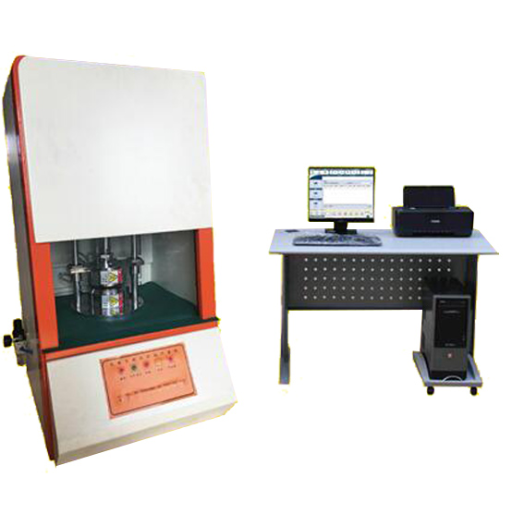
Quality management in rubber manufacturing consists of the following important steps to guarantee uniformity and efficacy of the product:
- Raw Material Inspection: Assess the quality of raw materials such as rubber polymers, fillers, and additives to ensure they meet specified standards before production begins.
- Process Monitoring: Ensure strict compliance to predetermined limits such as curing time, temperature during mixing, and pressure to avoid losing quality during production.
- Physical Testing: The Physical Testing step ensures that the routine tests conducted evaluating the tensile strength, elasticity, hardness and compression set of the rubber adhere to the specification limits.
- Visual and Dimensional Checks: During Visual and Dimensional Checks, the production is scrutinized for discrepancies such surface imperfections, uniformity, lack uniformity.
- Final Product Testing: Test the durability and abrasion resistance or thermal aging to evaluate if the product is suited for its intended application.
Following these steps helps manufacturers ensure that their rubber product meets expectation and maintain reliability in their intended purpose.
Setting Standards for Rubber Material Specifications
Keeping the performance and durability of a component in mind, the specifications of the rubber material must include the following properties: hardness (either Shore A or IRHD), tensile strength, elongation at break, and compression set values. Furthermore, the rubber’s willingness to withstand the elements, such as ozone, heat, oil, and other chemicals, must be clearly defined. The tolerances for these critical properties are usually governed by a standard organization such as ASTM International or ISO, which specialize in providing comprehensive testing and classification guidelines.
More advanced methods such as Thermogravimetric analysis and Fourier transform infrared spectroscopy (FTIR) enable precise analysis of the thermal properties and composition elements. Additionally, manufactuers need to define acceptable bounds for the conditions of processing, curing times, temperatures, and the pressures required. Strict compliance to material specifications augments product quality, makes application of industry standards easier, and bolsters multiuse reliability and performance.
Integrating Testing Methods into Quality Control Processes
Implementing quality control in a tested method for critical areas like security and reliability of products make sure every item works as intended. Nondestructive tests like ultrasonic, radiographic, and magnetic particle inspection are known as non-destructive testing (NDT) techniques that evaluate the quality of materials without destruction to its structure. Apart from these angles, products of laser scanning and machine vision fall under optical metrology which provides an accuracy of measuring one micron.
The automation of analyzing data in real-time takes quality assurance to an entirely new level by allowing automated identification of errors. Visually, machine learning makes the first step not only possible but easier as it enhances identification of defects on production lines allowing production lines to be adjusted accordingly. Following the steps of modern material science, increased levels of consistency, compliance with international regulations, and enhanced operational efficiency is very much possible if manufacturers/framework adopt data-driven testing strategies
What Are the Applications of Quality Rubber in Industries?
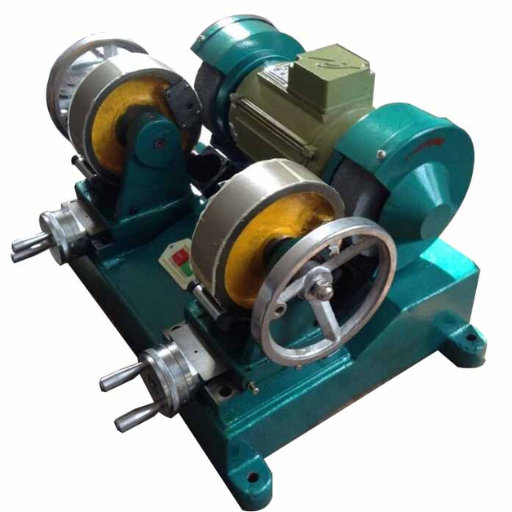
Quality rubber plays a critical role across a wide range of industries due to its durability, flexibility, and resistance to wear. In the automotive sector, it is used for manufacturing tires, seals, gaskets, and hoses, ensuring safety and performance in vehicles. Waterproofing membranes and flooring, as well as vibration dampening products, are also made out of rubber which are used in the construction industry. Moreover, the medical sector uses rubber for the production of surgical gloves, tubing, and device seals where precision and contamination likelihood is very critical. Wearing and consumer goods electronics along with aerospace also industrial them parts that are specialized and need to be exposed to harsh conditions, making rubber useful in such industries too.
Key Industries that Rely on High-Quality Rubber Products
Best quality rubber products are heavily used by the automotive industry which makes it the biggest consumer. Expansion joints, hoses, gaskets, rubber belts and tires are some parts imperative to vehicle efficiency, sufficiency, safety and smooth operation. Modern cars make use of rubber components that withstand extreme temperatures, high strain, and block vibrations. These methyl add and natural rubber blends bear up to these demanding endurance, durability and reliability challenges for years.
Rubber is extensively-used in the construction or infrastructure industries. Such rubber-based products as expansion joints, waterproof membranes used fro construction of buildings and vibration isolators enhance the building’s insulation, flexibility, weather resistance, and structural durability. This type of insulation is designed for extreme outside influences with long-term use, which is significant for commercial and private construction projects.
The Impact of Quality Rubber on Product Lifespan
A properly designed rubber works best in preserving mechanical properties over time which, coupled with failure averted through careful vulcanization, rings true to maintaining low maintenance expenses. With the construction improvements made in the formulation of rubber, including its tensile strength and elasticity, high quality wear, tear and environmental resistant rubbers soften and endure. These modern synthetic rubbers, like EPDM (Ethylene Propylene Diene Monomer) and nitrile rubber, are demanding superheroes used for automotive seals and industrial gaskets, as they excel under ozone and UV radiation wrath. Research informs us that specially designed rubbers are capable of commanding decades worth of mechanically demanding tasks to endure before requiring a change. With perfect cross-linking of polymers made possible through regulated vulcanization, changes enable proper vulcanization while further improving ferocious condition resiliency. Such features propel product existence span alongside efficiency in expenditure proving eco friendly and fiscally sensible for both consumers and industries alike.
Reference Sources
1. A Machine Vision Based Automatic Optical Inspection System for Detecting Defects of Rubber Keypads: This study developed a computer vision system to detect defects in rubber keypads, such as incorrect positioning, color distortion, and missing buttons.
2. Automation of Tire Curing Machine Using IoT: This research focused on automating the tire curing process using IoT and PLC systems. It highlighted the importance of precise control over temperature and pressure during vulcanization to ensure tire quality.
3. Physical Test Methods for Elastomers: This book provides a comprehensive guide to testing elastomers, covering mechanical, electrical, thermal, and durability properties.
Frequently Asked Questions (FAQs)
Q: What is the hardness of rubber and how is it measured?
A: The hardness of rubber refers to its resistance to indentation and is typically measured using shore hardness scales, such as Shore A for softer rubbers. The measurement indicates the material’s ability to withstand deformation and is an essential characteristic in the rubber industry.
Q: What are the common methods of compression testing for rubber?
A: Compression testing involves applying a compressive force to a rubber part and measuring its deformation. It helps determine the material’s compression set, which is the permanent deformation after the load is removed, and is crucial for evaluating the durability of rubber seals and gaskets.
Q: How does tensile testing work for rubber materials?
A: Tensile testing measures a rubber material’s ability to withstand stretching before breaking. During this test, a sample is pulled until it fractures, providing data on its tensile strength, elongation at break, and modulus of elasticity, which are important for assessing the performance of rubber products.
Q: What is a compression set in rubber testing?
A: Compression set refers to the permanent deformation of a rubber material after being subjected to a compressive load for a specified time and temperature. This testing is crucial to evaluate the long-term performance and material properties of rubber used in gaskets and seals.
Q: Why is specific gravity important in testing rubber?
A: Specific gravity is a measure of a rubber material’s density compared to water. It provides insights into the chemical and physical properties of rubber, helping to identify the type of rubber and its suitability for various applications in the rubber industry.
Q: What are the standard test methods for evaluating rubber quality?
A: Standard test methods include compression testing, tensile testing, and resistance testing. These methods assess various properties such as hardness of rubber, compression set, and the material’s ability to withstand tearing and environmental conditions.
Q: How does environmental conditions affect the durability of rubber?
A: Environmental conditions, such as temperature, humidity, and exposure to chemicals, can significantly impact the durability of rubber. Testing under specific environmental conditions helps determine the long-term performance and reliability of rubber materials in various applications.
Q: What role do physical testing methods play in the rubber industry?
A: Physical testing methods are essential in the rubber industry to evaluate the material properties and performance of rubber products. These tests ensure that the rubber meets the necessary standards for durability, resistance, and overall quality before being used in applications.
Q: How can the hardness of rubber influence its application?
A: The hardness of rubber affects its flexibility, resilience, and overall performance in specific applications. Softer rubbers are typically used for applications requiring greater flexibility, while harder rubbers are preferred for applications that demand durability and resistance to wear.





